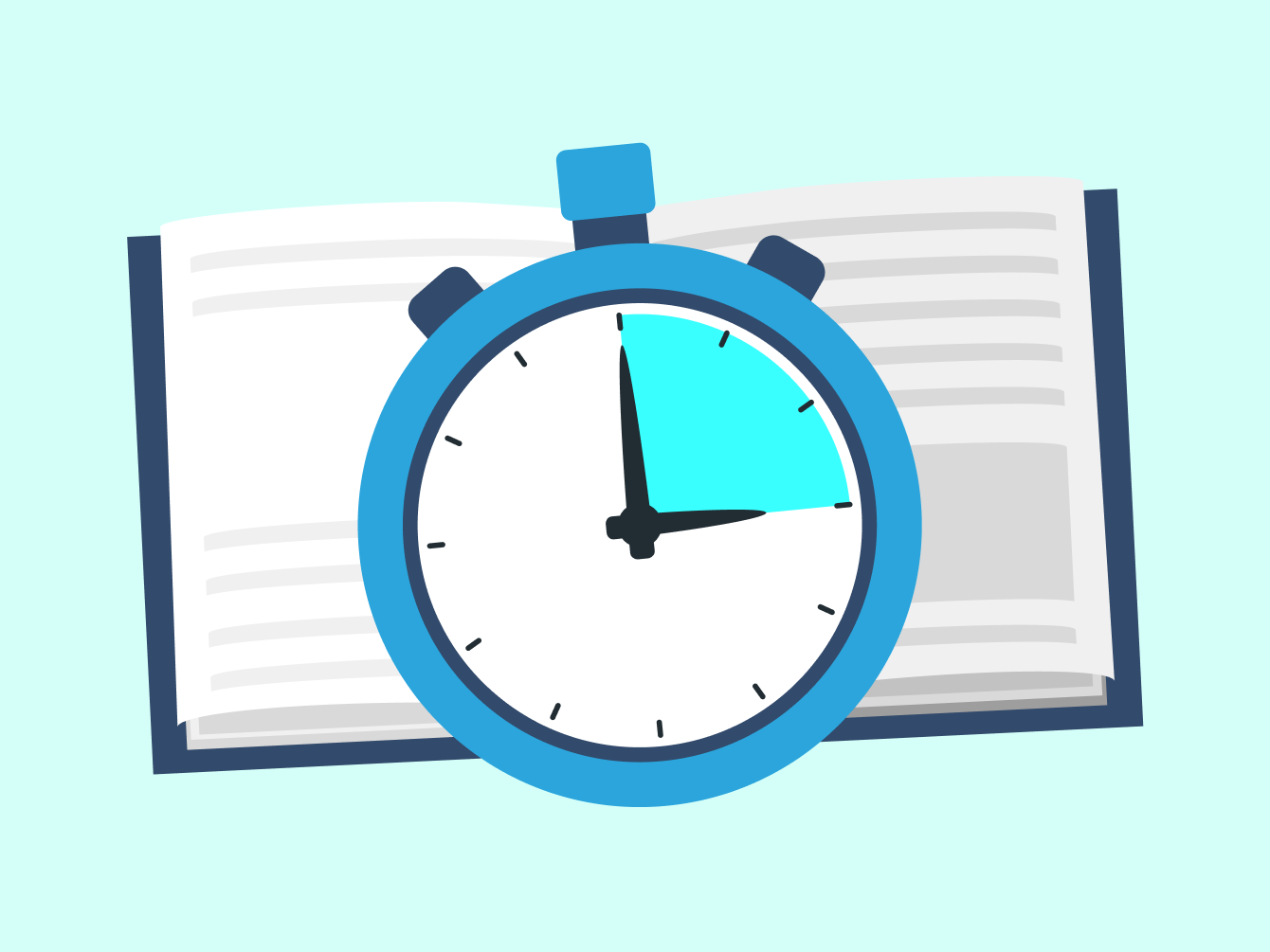Reading is so central to success in any field that it’s become a staple of measuring basic educational success. You may be a great, careful reader, but how can you become a faster reader?
The speed-reading methods we will introduce here aren’t particularly complex or difficult to implement, but they take time and effort to develop and increase in efficacy. Give them a try and embark upon your journey to read faster and better than ever before.
How to Read Faster with Four Speed-Reading Methods
1. Chunking
Most readers tend to absorb words one at a time, moving along a page and piecing these individual building blocks together into a sentence that has meaning. To become a faster reader, you need to expand your focus horizontally.
Instead of only focusing on a single word at a time, start to read several words at once. Start with two, but try to move on to three or more. This is made a lot easier if you're reading in narrow columns rather than text strewn horizontally across a wide page.
While grouping multiple words at a time may seem unnatural at first, some people develop this ability spontaneously. It’s something our brains are fully capable of, it just takes practice to master. This is called chunking, and it can speed up your reading considerably.
2. Tracking
Ever noticed how children are taught to read using their finger on the page to move from word to word? In adults, this is one of the methods for becoming a faster reader.
Using your finger or a pen, move down the center of the page as you scan the chunks to the left and right, then jump down to the next line. It’s a simple operation, but it keeps your brain focused on the correct line and can increase your speed.
3. Questioning
One of the best ways to ensure you can quickly read and digest a text is to have a good understanding of where it is going. You have to understand the framing in order to be able to process the details quickly.
With that in mind, a great way to increase your reading speed is to ask the questions: What is this text about? What are the central themes? What is the central thesis? Who wrote it?
These and similar questions will increase your reading speed by decreasing the amount of brainpower that is devoted to these questions as you digest the content.
4. Avoiding Sub-Vocalizing
Many readers go through a process of mentally vocalizing each word as they read. In other words, they say each word in their head. This is an inefficient process, and you can increase your reading speed by working to eliminate this habit.
Instead, work to simply take in the meaning of the word without mentally pronouncing it. Again, this will seem unnatural at first, but it can make a big impact on how quickly you can read.
FAQ: How to Read Faster and Better
How can I improve my reading speed?
Improving reading speed is all about practice and technique. Focus on building your eye movement control, reducing subvocalization, and scanning larger chunks of text at a time. Start by using a finger or pen to guide your eyes and gradually train your brain to process groups of words instead of individual ones. As you gain confidence, prioritize comprehension over word-for-word reading.
How did JFK read so fast?
John F. Kennedy was famously reported to read around 1,000 to 1,200 words per minute. He claimed to have learned speed-reading techniques during his time in the Navy and applied them rigorously. While the accuracy of his reading rate is debated, JFK’s story popularized the idea that rapid reading is possible with discipline and deliberate practice.
Is reading 100 pages in 2 hours fast?
That depends on the content and your reading goals. For lighter fiction or familiar material, it’s quite reasonable, especially if you’re an experienced reader using chunking and skimming. For dense academic material, though, this pace may compromise comprehension unless you’re already highly fluent in the subject.
Why can't I read quickly?
If you struggle to read quickly, it may be due to habits like subvocalization (saying words in your head), frequent regressions (re-reading), or a lack of familiarity with efficient reading techniques. It’s also possible your environment is distracting or the material is especially difficult. The good news? These are trainable skills. With the right strategies and some consistent practice, nearly anyone can read faster and more confidently.
Is Speed Reading for You?
Speed reading isn’t about racing through text just to say you’ve finished—it’s about understanding more in less time so you can learn efficiently and actually enjoy the process. Whether you’re diving into dense textbooks or tackling a growing “to-be-read” pile for fun, mastering techniques like chunking, tracking, and questioning can give your brain the boost it needs to stay sharp and engaged.
As with any new skill, getting faster at reading takes practice. But with a little patience and consistency, you’ll find yourself cruising through content with better focus, comprehension, and confidence. Pair these techniques with smart study tools (like Brainscape’s flashcards, of course), and you’ll be learning faster, remembering longer, and feeling more in control of your study journey.
Additional Reading
- How to read a textbook—and remember what you’ve read
- How to learn a language by reading
- Does Reading Out Loud Cause You to Remember Things Better?
References
CSI Literacy. (2018, October 29). Reading strategies and how to teach them: Asking questions. CSI Literacy NZ. https://csi-literacy.nz/blogs/blog/reading-strategies-asking-questions
Fountain, S. B., & Doyle, K. E. (2012). Learning by chunking. In Springer eBooks (pp. 1814–1817). https://doi.org/10.1007/978-1-4419-1428-6_1042
Rayner, K., Schotter, E. R., Masson, M. E. J., Potter, M. C., & Treiman, R. (2016). So much to read, so little time. Psychological Science in the Public Interest, 17(1), 4–34. https://doi.org/10.1177/1529100615623267
Stillman, J. (2016, January 22). New Science: Speed Reading Really Is Too Good to Be True. Inc. https://www.inc.com/jessica-stillman/sorry-science-says-speed-reading-doesn-t-work.html
